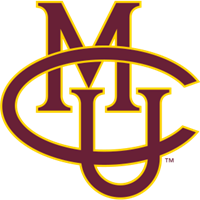What do they do?
Lay out reference points and dimensions on metal or plastic stock or workpieces, such as sheets, plates, tubes, structural shapes, castings, or machine parts, for further processing. Includes shipfitters.
Also known as:
Development Mechanic, Layout Fabricator, Layout Fitter, Layout Inspector, Layout Man, Layout Mechanic, Layout Technician (Layout Tech), Layout Worker, Ship Fitter
-
16.7%
Change
Ranks #N/A in job growth rate10Job Openings
Ranks #N/A in net job growth
-
Colorado Mesa University
Grand Junction, CO
-
NTMA Training Centers of Southern California
Santa Fe Springs, CA
-
Central Alabama Community College
Alexander City, AL
-
Pennsylvania College of Technology
Williamsport, PA
Looking for colleges that offer a specific major? Use the College Match Tool to find your best-matched schools and discover your estimated Net Price!
- Doctorate or Professional Degree (<1%)
- Master's degree (1%)
- Bachelor's degree (5%)
- Associate's degree (7%)
- Some college, no degree (21%)
- High school diploma equivalent (48%)
- Less than high school diploma (18%)
People in this career often know a lot about:
- Mathematics - Knowledge of arithmetic, algebra, geometry, calculus, statistics, and their applications.
- Design - Knowledge of design techniques, tools, and principles involved in production of precision technical plans, blueprints, drawings, and models.
- Mechanical - Knowledge of machines and tools, including their designs, uses, repair, and maintenance.
- Production and Processing - Knowledge of raw materials, production processes, quality control, costs, and other techniques for maximizing the effective manufacture and distribution of goods.
- Engineering and Technology - Knowledge of the practical application of engineering science and technology. This includes applying principles, techniques, procedures, and equipment to the design and production of various goods and services.
- English Language - Knowledge of the structure and content of the English language including the meaning and spelling of words, rules of composition, and grammar.
People in this career often have talent in:
- Near Vision - The ability to see details at close range (within a few feet of the observer).
- Visualization - The ability to imagine how something will look after it is moved around or when its parts are moved or rearranged.
- Arm-Hand Steadiness - The ability to keep your hand and arm steady while moving your arm or while holding your arm and hand in one position.
- Problem Sensitivity - The ability to tell when something is wrong or is likely to go wrong. It does not involve solving the problem, only recognizing that there is a problem.
- Manual Dexterity - The ability to quickly move your hand, your hand together with your arm, or your two hands to grasp, manipulate, or assemble objects.
- Information Ordering - The ability to arrange things or actions in a certain order or pattern according to a specific rule or set of rules (e.g., patterns of numbers, letters, words, pictures, mathematical operations).
People in this career often do these activities:
- Draw guide lines or markings on materials or workpieces using patterns or other references.
- Plan production or operational procedures or sequences.
- Align parts or workpieces to ensure proper assembly.
- Design templates or patterns.
- Assemble metal or plastic parts or products.
- Lay out parts to prepare for assembly.
- Attach decorative or functional accessories to products.
- Calculate dimensions of workpieces, products, or equipment.
- Assemble metal structures.
- Lift materials or workpieces using cranes or other lifting equipment.
- Inspect metal, plastic, or composite products.
- Create diagrams or blueprints for workpieces or products.
- Construct patterns, templates, or other work aids.
- Apply protective or decorative finishes to workpieces or products.
This page includes data from:

 Occupation statistics: USDOL U.S. Bureau of Labor Statistics Occupational Employment Statistics
Occupation statistics: USDOL U.S. Bureau of Labor Statistics Occupational Employment Statistics









